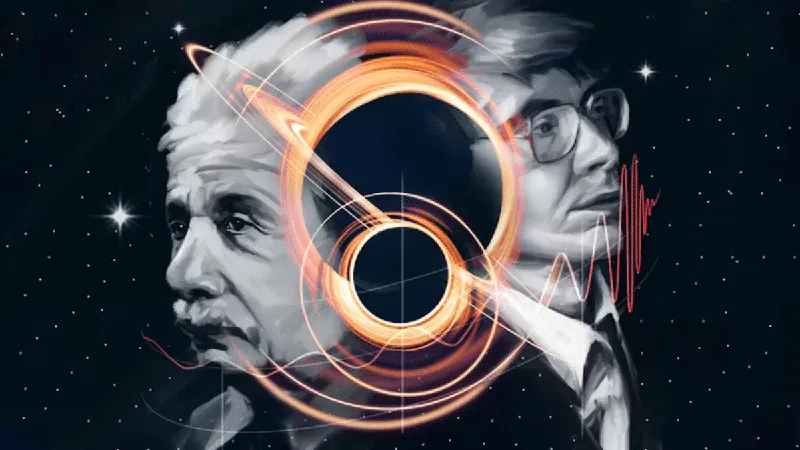
A Decade of Discovery: How Gravitational Waves are Unlocking the Secrets of the Universe
2025-09-13
Author: Sarah
A Historic Milestone in Gravitational Waves
Ten years ago, on September 14, 2015, the universe echoed with a groundbreaking discovery—the first direct observation of gravitational waves by the Laser Interferometer Gravitational-wave Observatory (LIGO) in the U.S. This monumental ripple, known as GW150914, was born from the dramatic collision of two massive black holes, each over thirty times heavier than our Sun and located a staggering billion light-years away.
This remarkable finding validated Einstein’s century-old theory of relativity, paving the way for the Nobel Prize in Physics in 2017 awarded to pioneering scientists Rainer Weiss, Barry Barish, and Kip Thorne for their critical roles in the LIGO collaboration.
Wave After Wave: The Surge of New Discoveries
Since that pivotal moment, LIGO, alongside Italy’s Virgo and Japan’s KAGRA detectors, has revealed more than 300 gravitational wave signals. Just weeks ago, the LIGO/Virgo/KAGRA collaboration released stunning new results, doubling the known gravitational wave counts in their latest observing run.
Now, precisely ten years later, an international team—including researchers from the Australian Research Council’s Centre of Excellence for Gravitational Wave Discovery (OzGrav)—has unveiled a fresh gravitational wave signal, dubbed GW250114. Miraculously, this new signal shares striking similarities with the very first, GW150914.
Thanks to significant advancements in detector technology, however, GW250114 is even clearer, ringing out nearly four times louder than its predecessor.
Unveiling the Laws of Black Holes: The Legacy of Hawking
The excitement doesn’t stop there! These revelations offer a chance to test the ideas of legendary physicist Stephen Hawking, who made waves over fifty years ago with groundbreaking principles on black holes. Among these principles lies Hawking’s second law of black hole mechanics—asserting that the area of a black hole’s event horizon must continuously increase.
Moreover, Jacob Bekenstein established a link between a black hole's area and its entropy, the measure of disorder in a system, confirming that the universe is inherently evolving towards greater complexity.
Testing the Theories: A Revolutionary Approach
But how can we validate these theories? The answer lies in colliding black holes—ideal tools for this scientific exploration. Recent measurements from GW250114 enabled the most precise test of Hawking’s area theorem yet.
Previous observations with GW150914 hinted at compliance with Hawking’s law but lacked conclusive evidence. Now, scientists have confirmed that the area of the final black hole formed during the collision aligns perfectly with theoretical predictions, solidifying Hawking's ideas.
Looking Ahead: The Future of Gravitational Wave Research
As we look to the future, one can only wonder which scientific giant’s theories will be put to the test next. Upcoming gravitational wave observations promise not just to deepen our understanding of black holes but also to probe enigmatic phenomena like dark matter and dark energy—two of the universe’s biggest mysteries.
Brace yourselves, the cosmos has even more secrets to unveil!

 Brasil (PT)
Brasil (PT)
 Canada (EN)
Canada (EN)
 Chile (ES)
Chile (ES)
 Česko (CS)
Česko (CS)
 대한민국 (KO)
대한민국 (KO)
 España (ES)
España (ES)
 France (FR)
France (FR)
 Hong Kong (EN)
Hong Kong (EN)
 Italia (IT)
Italia (IT)
 日本 (JA)
日本 (JA)
 Magyarország (HU)
Magyarország (HU)
 Norge (NO)
Norge (NO)
 Polska (PL)
Polska (PL)
 Schweiz (DE)
Schweiz (DE)
 Singapore (EN)
Singapore (EN)
 Sverige (SV)
Sverige (SV)
 Suomi (FI)
Suomi (FI)
 Türkiye (TR)
Türkiye (TR)
 الإمارات العربية المتحدة (AR)
الإمارات العربية المتحدة (AR)